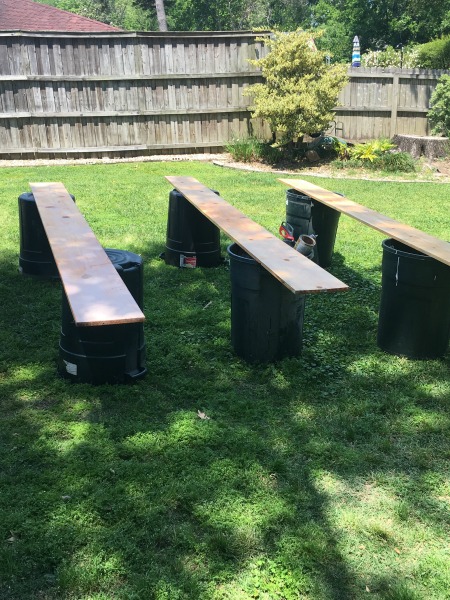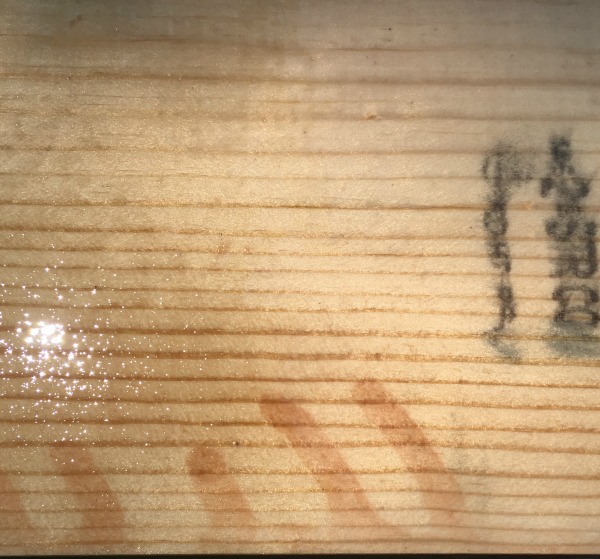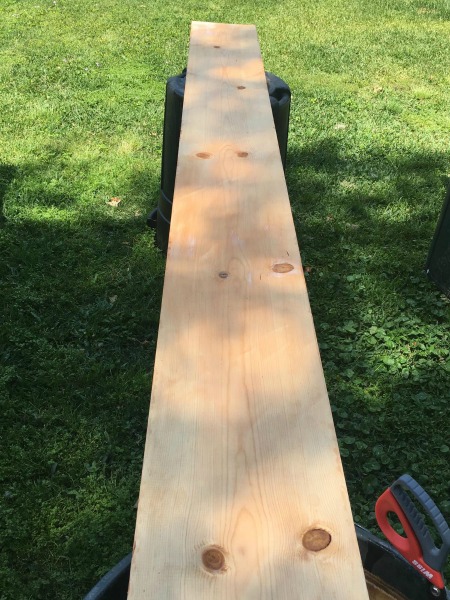Wood Staining – Lessons Learned
I love to stain wood. It is relaxing and rewarding to see the finished product, especially when it comes out nice. I have blogged before about the importance of patience when doing any wood working project, especially staining. I recently purchased some beautiful 1x12x8 white pine lumber to use for bookshelves in my home office. I bought Minwax Polyshade Classic Oak stain and went to work to apply two coats on both faces and the edges. I don’t stain the ends because they will not be visible. I stain both faces so I can then decide later which side looks best and install it with the best face turned upwards.
I set up a “work station” in my backyard using trash cans as work benches. As usual, I was in a hurry with so many other things to do. So, I made many mistakes that I would like to share with you and myself!

Mistakes – The Ones That I Can Remember
I did a poor job of preparing the surface. I did not rub the board faces with fine grit sand paper or steel wool before the initial stain application and I did not wipe the faces clean with mineral spirits before the first coat or between coats.
I set up a lousy work station. I used old trash cans as work benches in my back yard. This is fine but the problem is that my backyard is partially shaded so the stain dried unevenly. Also, the boards were left to dry overnight and a heavy dew the next morning was not helpful.
I applied the stain too quickly and drips and runs formed on the edges, which I was too busy to notice. The runs have now hardened and can be removed with a finger nail but the resulting stain will be uneven.
I let the boards become bone dry and then dead stacked them in my carport. I hope that the high temperatures and humidity do not cause the boards to stick.



Take Away
So, I guess the question is what I have learned? Well, to be honest the answer is nothing. I already knew the dangers of doing a rush job on any wood working project. However, I was more in a rush to get it done fast rather than to get it done right. The faces will be covered with books, and I can retouch up the visible edge as needed, and as time permits, once the shelves are installed. So, I will soon install the shelves and use them as a teaching lesson to myself and visitors. I have previously refinished sentimental pieces of furniture that were handed down to me by my parents. These pieces were done slow and steady and came out beautiful. So, I guess I have proved that I know how to stain wood correctly and incorrectly!

Meet the Author
Dr. Todd Shupe is the President of Wood Science Consulting, LLC. He is a well-recognized expert on wood forensics, wood preservation, wood decay and degradation, and wood species identification. He has a broad background in new product development, quality management, and marketing and sales in both the public and private sectors. For more information please visit DrToddShupe.com.
We welcome your comments below.
Thank you for visiting. We trust that you have enjoyed reading our articles.
Liked this post? Read more below or search for more topics . . .

